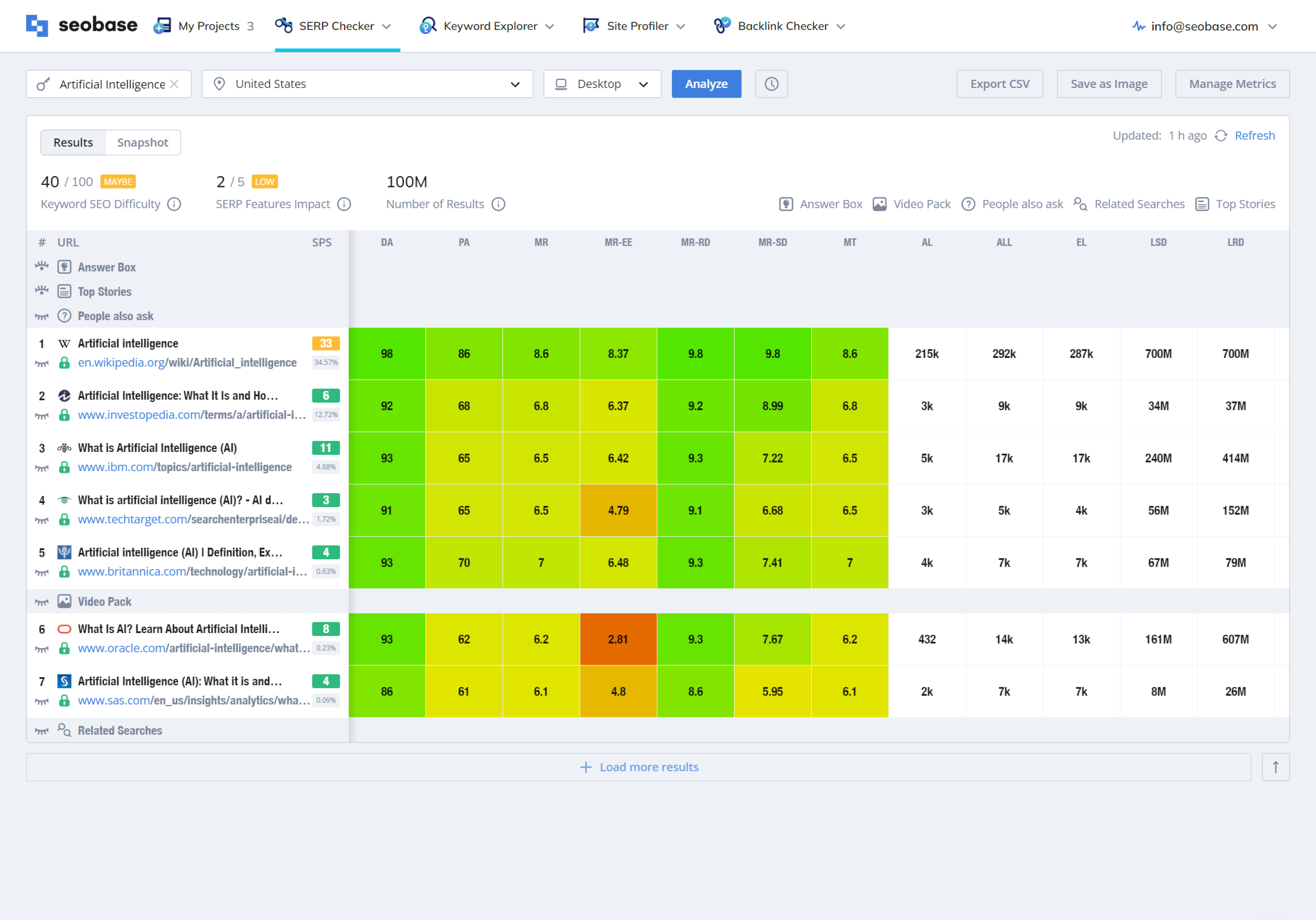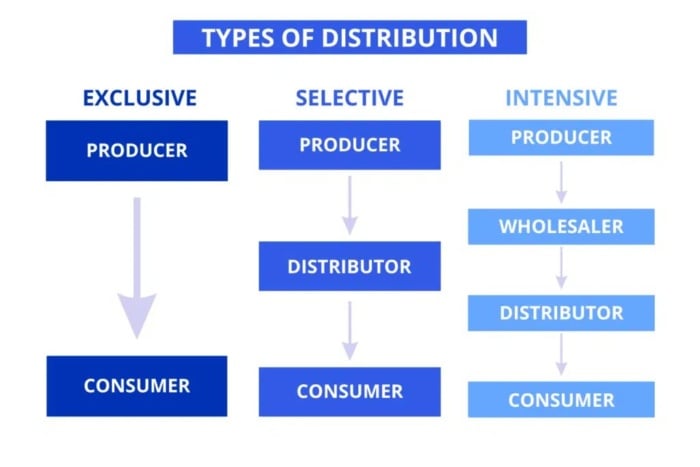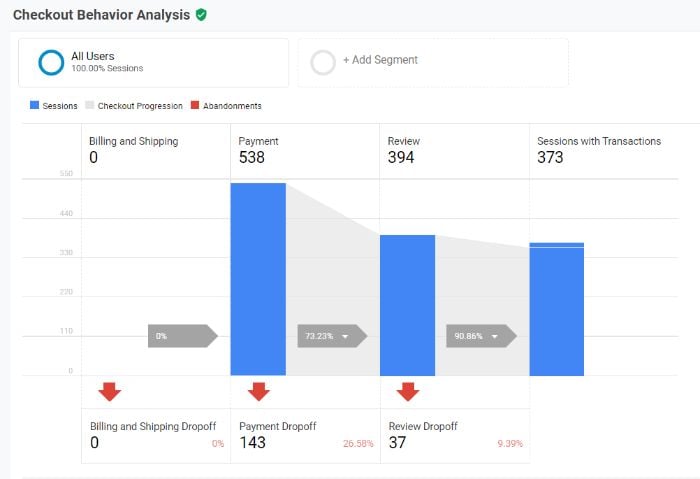
Published: Nov 30, 2024
Best Content Planning Tools for 2025: Top Picks for Consistent Publication
Best Content Planning Tools for 2025: Top Picks for Consistent Publication
I’ve been in the content marketing trenches for over a decade, and let me tell you, finding the right tools to keep your content flowing consistently is like striking gold. Lucky for you, I’ve done the heavy lifting and narrowed down the top content planning tools that’ll make your life easier and your content calendar fuller. Let’s dive in!
Top Picks:
| Category | Product | Key Features | Price | Downsides |
| --- | --- | --- | --- | --- |
| Best Overall | StoryChief | - All-in-one content planning
- SEO optimization
- Multi-channel publishing
- Collaboration tools | $99/month | - Learning curve for new users
- Higher price point |
| Best Value | Trello | - Visual content calendar
- Customizable workflows
- Integration capabilities
- Free plan available | $5/user/month | - Limited content-specific features
- Can get cluttered with large teams |
| Best for SEO | MarketMuse | - AI-driven content planning
- Keyword research
- Content briefs
- Competitive analysis | $7,200/year | - Expensive for small teams
- Requires time to learn |
| Best for Social Media | ContentCal | - Social media calendar
- Content ideas generator
- Approval workflows
- Analytics | $29/month | - Limited to social media
- Some features only in higher-tier plans |
Table of Contents
- Best for SEO: MarketMuse
- Best for Social Media: ContentCal
- Other Noteworthy Products
- Best Overall: StoryChief
- Best Value: Trello
Best for SEO: MarketMuse
If you’re dead set on climbing those search engine rankings, MarketMuse is your secret weapon. This AI-powered content planning tool is like having a team of SEO experts working around the clock to boost your content strategy.
Key Features of MarketMuse
-
- MarketMuse’s AI analyzes top-ranking content and generates detailed briefs
- Includes topic suggestions, recommended word count, and questions to answer
- Helps create comprehensive, authoritative content that Google loves
-
- Goes beyond basic keyword research tools
- Identifies related topics and content gaps in your niche
- Suggests long-tail keywords and semantic variations
-
- Scans your existing content and identifies improvement opportunities
- Highlights thin content and topics that need more depth
- Recommends internal linking strategies to boost overall site authority
-
- Analyzes your competitors’ content strategies
- Identifies content gaps you can exploit
- Helps you stay one step ahead in your industry
Real-World Impact
I talked to Sarah, a content manager at a SaaS startup, who’s been using MarketMuse for the past year. She told me, “Our organic traffic has jumped 150% since we started using MarketMuse’s content briefs. The AI suggestions really help us create more comprehensive articles that rank for a ton of long-tail keywords we hadn’t even considered before.”
Pricing Breakdown
MarketMuse isn’t cheap, but the potential ROI can be huge:
- Standard Plan: $7,200/year ($600/month)
- Premium Plan: Custom pricing (typically $1,000+ /month)
They occasionally offer a free trial, so keep an eye out for that if you want to test the waters.
Pros and Cons
Pros:
- Unparalleled depth of SEO insights
- AI-powered recommendations save tons of research time
- Helps create truly comprehensive, authoritative content
Cons:
- Steep learning curve (plan for a few weeks to get fully up to speed)
- Expensive for small businesses or individual bloggers
- Overkill if you’re not publishing content regularly
Integration Options
MarketMuse plays nice with other tools in your stack:
- Google Docs
 Write content directly in Google Docs with MarketMuse’s browser extension
Write content directly in Google Docs with MarketMuse’s browser extension - WordPress Seamless publishing workflow with their WordPress plugin
- Slack Get content briefs and alerts delivered right to your team’s Slack channels
Is MarketMuse Right for You?
MarketMuse is a powerhouse, but it’s not for everyone. You’ll get the most bang for your buck if:
- You’re publishing multiple pieces of content weekly
- You have a dedicated content team (or are willing to expand your current one)
- Your business heavily relies on organic search traffic
- You’re in a competitive niche and need every edge you can get
If you’re just starting out or publishing infrequently, you might want to look at more budget-friendly options like Clearscope or Frase to dip your toes into AI-powered SEO.
Remember, even the best tools can’t replace solid writing and genuine expertise. MarketMuse helps you optimize, but you still need to bring valuable insights to the table!
Best for Social Media: ContentCal
Managing social media content can feel like herding cats. That’s where ContentCal comes in clutch. This tool is a godsend for small businesses and social media managers looking to keep their feeds fresh and engaging.
Key Features of ContentCal
-
- Color-coded posts for different platforms
- Drag-and-drop interface for easy rescheduling
- Bird’s-eye view of your entire social strategy
-
- Store and organize content ideas
- Collaborate with team members on brainstorming
- Never run out of post inspiration again
-
- Set up custom approval processes
- Ensure brand consistency across all posts
- Streamline collaboration between team members
-
- Track performance across all platforms
- Identify top-performing content
- Adjust your strategy based on real data
Real-World Impact
I chatted with Mike, who runs social media for a local coffee shop chain. He told me, “ContentCal’s been a game-changer. We’ve doubled our engagement on Instagram since we started using it. The content ideas feature helps us stay creative, even during slow seasons.”
Pricing Breakdown
ContentCal offers flexible pricing to fit different needs:
- Pro Plan: $29/month (1 user, 4 social profiles)
- Company Plan: $99/month (6 users, 10 social profiles)
- Premium Plan: Custom pricing for larger teams
They often run promotions, so keep an eye out for deals!
Pros and Cons
Pros:
- User-friendly interface
- Excellent for team collaboration
- Content ideas feature sparks creativity
Cons:
- Limited analytics on lower-tier plans
- No built-in image editing (unlike some competitors)
- Can get pricey for larger teams
Integration Options
ContentCal plays well with others:
- Canva Create graphics without leaving the platform
- Zapier Automate workflows with hundreds of other apps
- Bitly Track link clicks and engagement
Is ContentCal Right for You?
ContentCal shines for:
- Small to medium-sized businesses managing multiple social accounts
- Marketing agencies handling client social media
- Teams that need streamlined approval processes
If you’re a solo entrepreneur or just managing one or two accounts, you might find ContentCal’s features overkill. In that case, a simpler tool like Buffer might be a better fit.
Remember, consistency is key in social media. ContentCal helps you maintain a steady posting schedule, but you still need to bring the creativity and audience engagement!
Pro Tip: Maximizing ContentCal
To really squeeze the most out of ContentCal, try this:
- Set up content categories (e.g., product showcases, customer stories, industry news)
- Assign each category a color in your calendar
- Aim for a balanced mix of content types each week
This approach keeps your feed varied and interesting, which is crucial for maintaining audience engagement on platforms like Facebook and Twitter.
ContentCal isn’t just about scheduling – it’s about elevating your entire social media strategy. With the right approach, it can transform your social presence from sporadic posts to a well-oiled content machine.
Other Noteworthy Products
While our top picks are stellar, there are some other content planning tools worth mentioning. Let’s dive into a few that almost made the cut:
Asana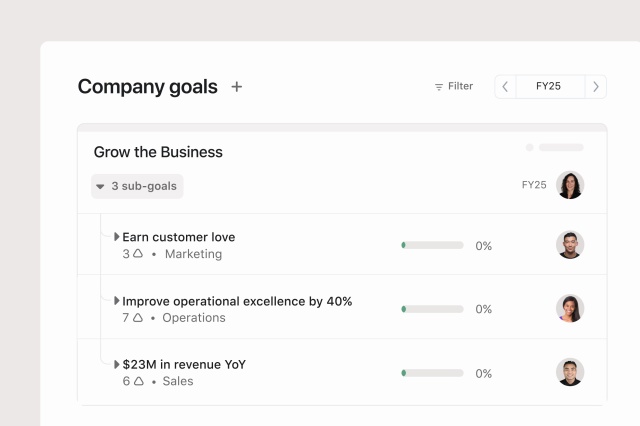
Asana’s not just for project management - it’s a secret weapon for content planning too. Here’s why it’s worth considering:
- Flexible workflows: Create custom pipelines for your content production process
- Timeline view: Perfect for visualizing your content calendar at a glance
- Integration powerhouse: Plays nice with over 200 other apps
I talked to Jake, a content manager at a tech startup, who swears by Asana. He told me, “We use Asana’s board view to track our blog posts from idea to publication. The ability to attach files and tag team members has cut our production time in half.”
Pricing: Asana offers a free plan for up to 15 users. Paid plans start at $10.99/user/month.
CoSchedule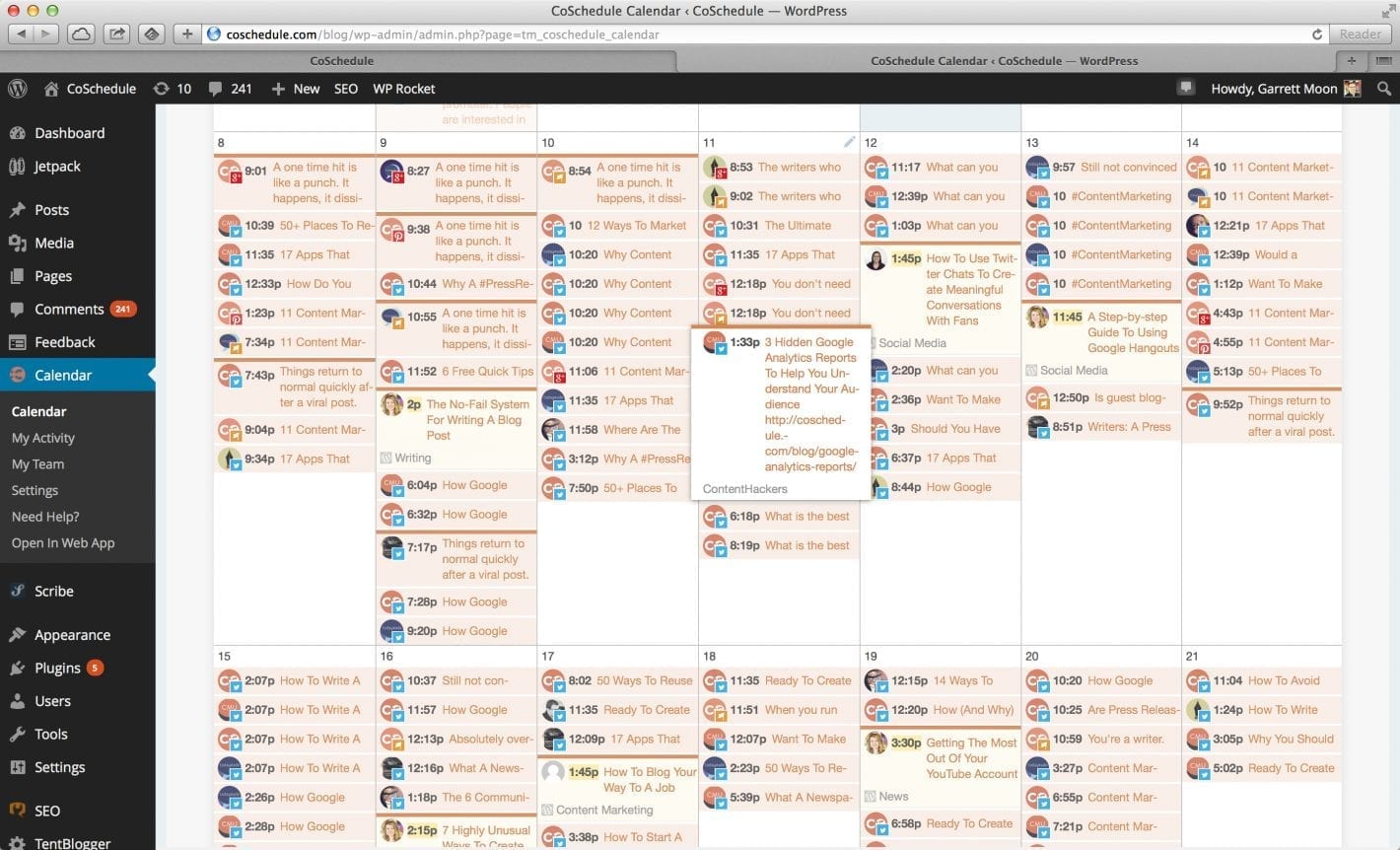
CoSchedule is like the Swiss Army knife of content planning tools. Here’s what makes it stand out:
- Marketing calendar: Get a bird’s-eye view of all your marketing efforts
- ReQueue: Automatically reshares your best-performing content
- Task templates: Standardize your content workflow for consistency
Sarah, a solo entrepreneur I met at a conference, raved about CoSchedule. “The ReQueue feature is a game-changer,” she said. “It keeps my social media feeds active even when I’m swamped with client work.”
Pricing: Plans start at $29/month for individuals, with team plans available.
Notion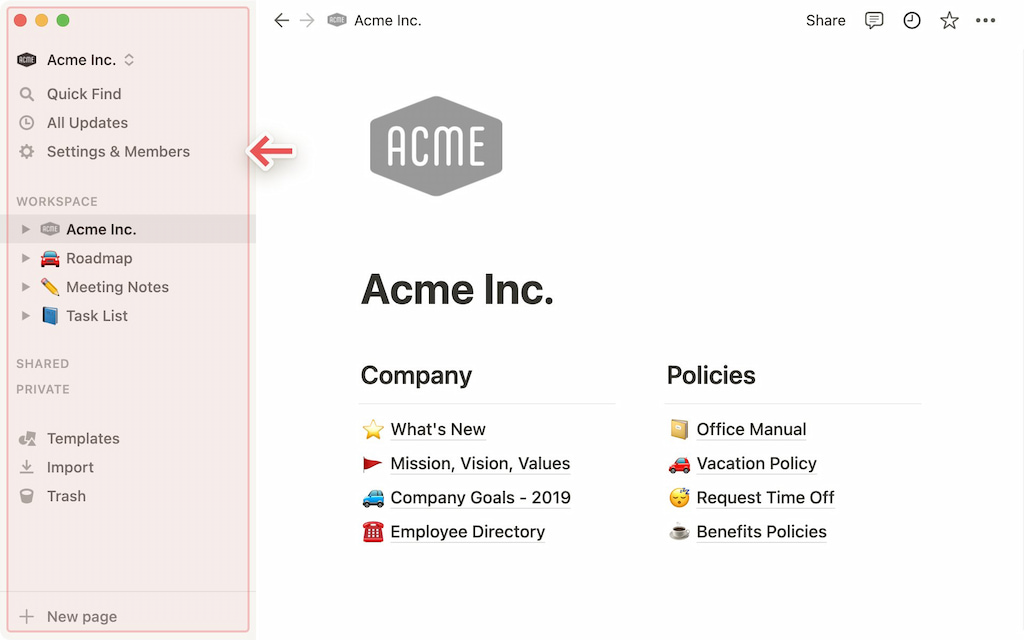
Notion’s like a blank canvas for content planning. Its flexibility is both a blessing and a curse. Here’s the scoop:
- Customizable databases: Build the perfect content tracker for your needs
- Templates galore: Don’t start from scratch - use community-created templates
- Collaborative editing: Work on content drafts right in Notion
I use Notion for my personal blog, and it’s been a game-changer. The ability to link between pages helps me connect ideas and spot gaps in my content strategy.
Pricing: Notion has a free plan for individuals. Team plans start at $8/user/month.
Airtable
Think spreadsheets on steroids. Airtable’s a powerhouse for organizing complex content plans:
- Multiple views: Switch between grid, calendar, and kanban views
- Automations: Set up rules to streamline your workflow
- Robust API: Connect Airtable to your other tools for a seamless experience
Tom, a content strategist I met at a marketing workshop, swears by Airtable. “We use it to manage our entire content library,” he said. “The ability to filter and sort by multiple criteria helps us spot trends and gaps in our strategy.”
Pricing: Airtable offers a free plan with limited features. Paid plans start at $10/user/month.
Hootsuite
While primarily known for social media management, Hootsuite’s got some solid content planning features:
- Content calendar: Schedule and visualize your social media content
- Bulk scheduling: Plan out weeks of content in one go
- Analytics: Track performance and adjust your strategy on the fly
My friend Lisa, who runs social media for a local restaurant, loves Hootsuite. “The ability to schedule Instagram posts directly is a huge time-saver,” she told me over coffee last week.
Pricing: Hootsuite’s plans start at $49/month for smaller teams.
Remember, the best tool is the one you’ll actually use consistently. Don’t be afraid to take advantage of free trials to find the perfect fit for your content planning needs. And hey, sometimes a combination of tools works best - I know plenty of content creators who use Trello for ideation and Asana for production management.
Whatever you choose, the key is to stick with it and refine your process over time. Happy planning!
Best Overall: StoryChief
You know that feeling when you find a tool that just clicks? That’s StoryChief for content planning. I’ve been using it for the past year, and it’s completely transformed how I approach content creation and distribution.
StoryChief
Your Content Marketing Command Center
StoryChief isn’t just another scheduling tool. It’s a full-blown content marketing platform that handles everything from ideation to analytics. Here’s why it’s my top pick:
Key Features
-
- Write once, publish everywhere
- Built-in SEO and readability checks
- Collaborative editing in real-time
AI-Powered Content Strategy Wizard

- Generates customized content plans in minutes
- Suggests topics based on your audience and goals
- Helps maintain a consistent publishing schedule
-
- Push content to your blog, social media, and email lists
- Automatically format posts for each platform
- Schedule content for optimal engagement times
-
- Track performance across all channels
- Identify top-performing content
- Measure ROI on your content efforts
Real-World Impact
I caught up with Emily, a marketing manager at a growing SaaS startup, who’s been using StoryChief for six months. She told me, “We’ve increased our content output by 40% without adding headcount. The AI suggestions for content ideas have been spot-on, and the ability to collaborate in real-time has cut our revision cycles in half.”
Pricing Breakdown
StoryChief offers flexible pricing to fit different team sizes:
- Starter: $99/month (1 user, 3 channels)
- Growth: $199/month (3 users, 10 channels)
- Business: Custom pricing for larger teams
They often run promotions for annual plans, so keep an eye out for deals!
Pros and Cons
Pros:
- All-in-one solution for content planning and distribution
- AI-powered features save time and spark creativity
- Excellent collaboration tools for teams
Cons:
- Learning curve for new users (plan for a week or two to get fully up to speed)
- More expensive than basic scheduling tools
- Some advanced features only available on higher-tier plans
Integration Heaven
StoryChief plays nice with your existing tech stack:
- WordPress Seamless publishing to your WordPress site
- Mailchimp Sync your email lists for newsletter distribution
- Zapier Connect StoryChief to 3000+ other apps
Is StoryChief Right for You?
StoryChief shines brightest for:
- Small to medium-sized businesses with active content strategies
- Marketing agencies managing multiple client accounts
- Content teams looking to streamline their workflows
If you’re just starting out or only publish occasionally, you might find StoryChief’s feature set overkill. In that case, a simpler tool like Trello might be a better fit to start.
Pro Tip: Maximizing StoryChief
To really squeeze the most out of StoryChief, try this workflow:
- Use the AI wizard to generate a month’s worth of content ideas
- Assign topics to team members in the collaborative editor
- Set up approval workflows to maintain quality control
- Schedule content across all your channels in one go
- Analyze performance and adjust your strategy monthly
This approach helps you maintain a consistent content flow while staying agile enough to capitalize on trending topics.
Remember, StoryChief is powerful, but it’s not magic. You still need to bring your creativity and industry expertise to the table. Use it as a force multiplier for your content efforts, not a replacement for strategic thinking.
In my experience, StoryChief has been a game-changer for maintaining a consistent content strategy across multiple channels. It’s like having an extra team member dedicated to keeping your content machine running smoothly. If you’re serious about scaling your content marketing efforts, it’s definitely worth taking StoryChief for a spin.
Best Value: Trello
Let’s talk about Trello. It’s not just for software developers anymore - this visual powerhouse has become a secret weapon for content creators on a budget.
Key Features of Trello
-
- Visualize your content pipeline from idea to publication
- Drag-and-drop cards to update status effortlessly
- Customizable columns to match your unique workflow
-
- Extend Trello’s functionality with add-ons
- Calendar view for easy content scheduling
- Integrate with tools like Google Drive and Slack
-
- Create rules to automate repetitive tasks
- Set up custom buttons for one-click actions
- Schedule recurring cards for regular content pieces
-
- Assign team members to specific cards
- Comment and attach files directly on cards
- Activity feed to track all changes
Real-World Impact
I bumped into Alex, a freelance content writer, at a local coffee shop. He gushed about Trello: “I manage content for five different clients using just Trello boards. The calendar power-up lets me see my entire month at a glance. It’s been a lifesaver for staying organized and meeting deadlines.”
Pricing Breakdown
Trello’s pricing is surprisingly wallet-friendly:
- Free Plan: Unlimited personal boards, 10 team boards
- Standard Plan: $5/user/month (when billed annually)
- Premium Plan: $10/user/month (when billed annually)
- Enterprise Plan: Custom pricing for large organizations
Cost-Benefit Analysis
For small teams or solo content creators, Trello’s free plan packs a punch. You get:
- Unlimited cards and lists
- 10 MB per file attachment
- 1 power-up per board
- 250 Workspace command runs per month
Upgrading to the Standard plan ($5/user/month) unlocks:
- Unlimited power-ups
- Advanced checklists
- Custom fields
- 250 MB per file attachment
For most content teams, the Standard plan hits the sweet spot of features vs. cost.
Pros and Cons
Pros:
- Incredibly flexible and customizable
- Visual interface makes content planning intuitive
- Generous free plan
Cons:
- Can get messy without proper organization
- Less specialized for content than some alternatives
- Limited reporting features on lower-tier plans
Integration Options
Trello plays nice with tons of other tools:
- Zapier
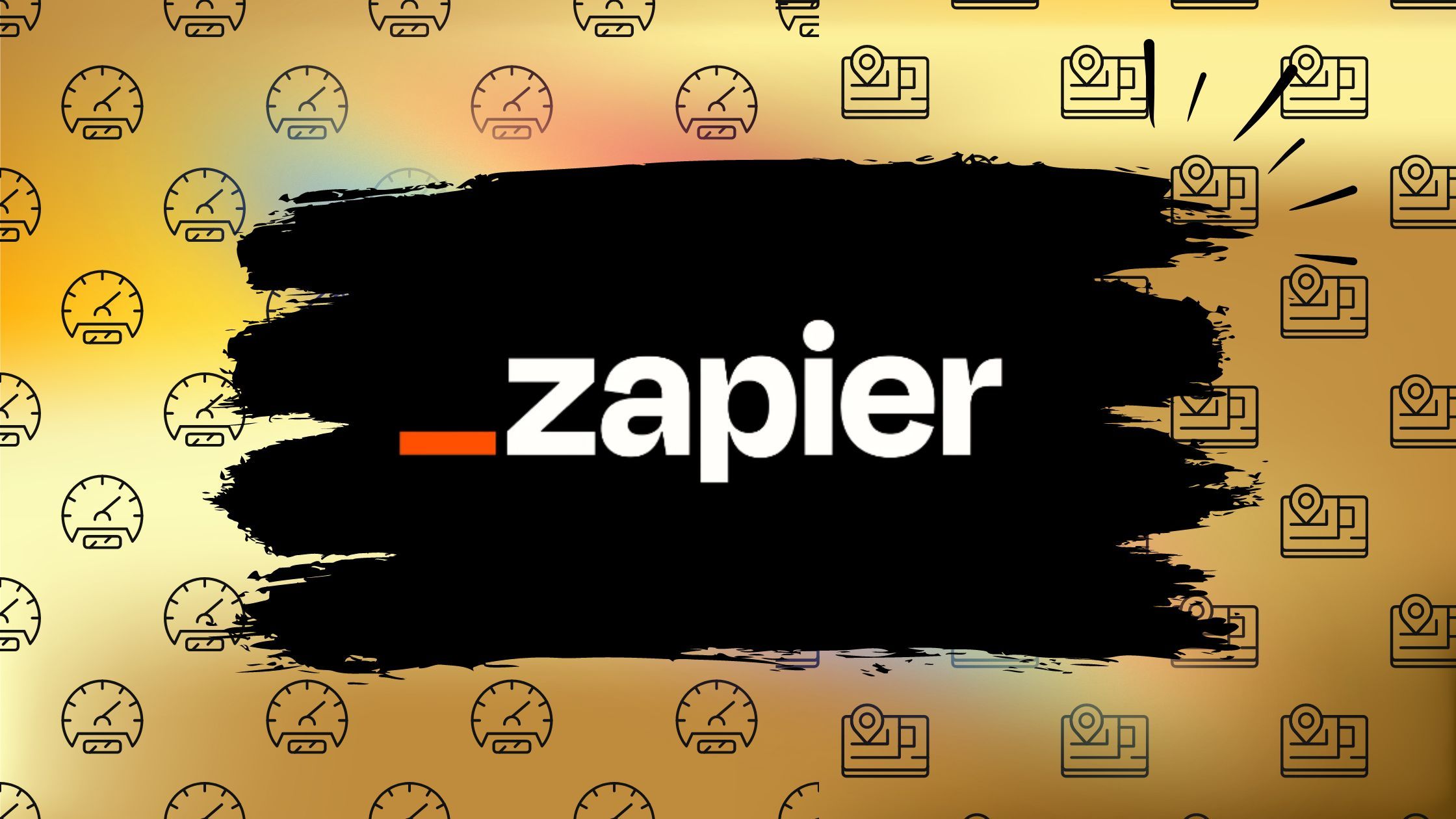 Connect Trello to 3000+ other apps
Connect Trello to 3000+ other apps - Google Calendar Sync deadlines automatically
- Confluence Link cards to detailed project docs
Is Trello Right for You?
Trello shines for:
- Small to medium-sized content teams
- Freelancers juggling multiple clients
- Visual thinkers who love to customize their workflow
If you need heavy-duty editorial calendaring or advanced analytics, you might outgrow Trello eventually. But for most content creators, it’s an excellent starting point that can scale with your needs.
Pro Tip: Maximizing Trello for Content Planning
Here’s a simple Trello setup I use for content planning:
- Create lists for: Ideas, In Progress, Editing, Scheduled, Published
- Use labels to categorize content types (blog, social, video, etc.)
- Set up Butler to automatically move cards to “Scheduled” when you add a due date
- Use the Calendar power-up to visualize your content schedule
This structure gives you a clear overview of your content pipeline while keeping things flexible.
Remember, Trello’s strength is its versatility. Don’t be afraid to experiment with different board layouts and automation rules to find what works best for your workflow. Happy planning!

